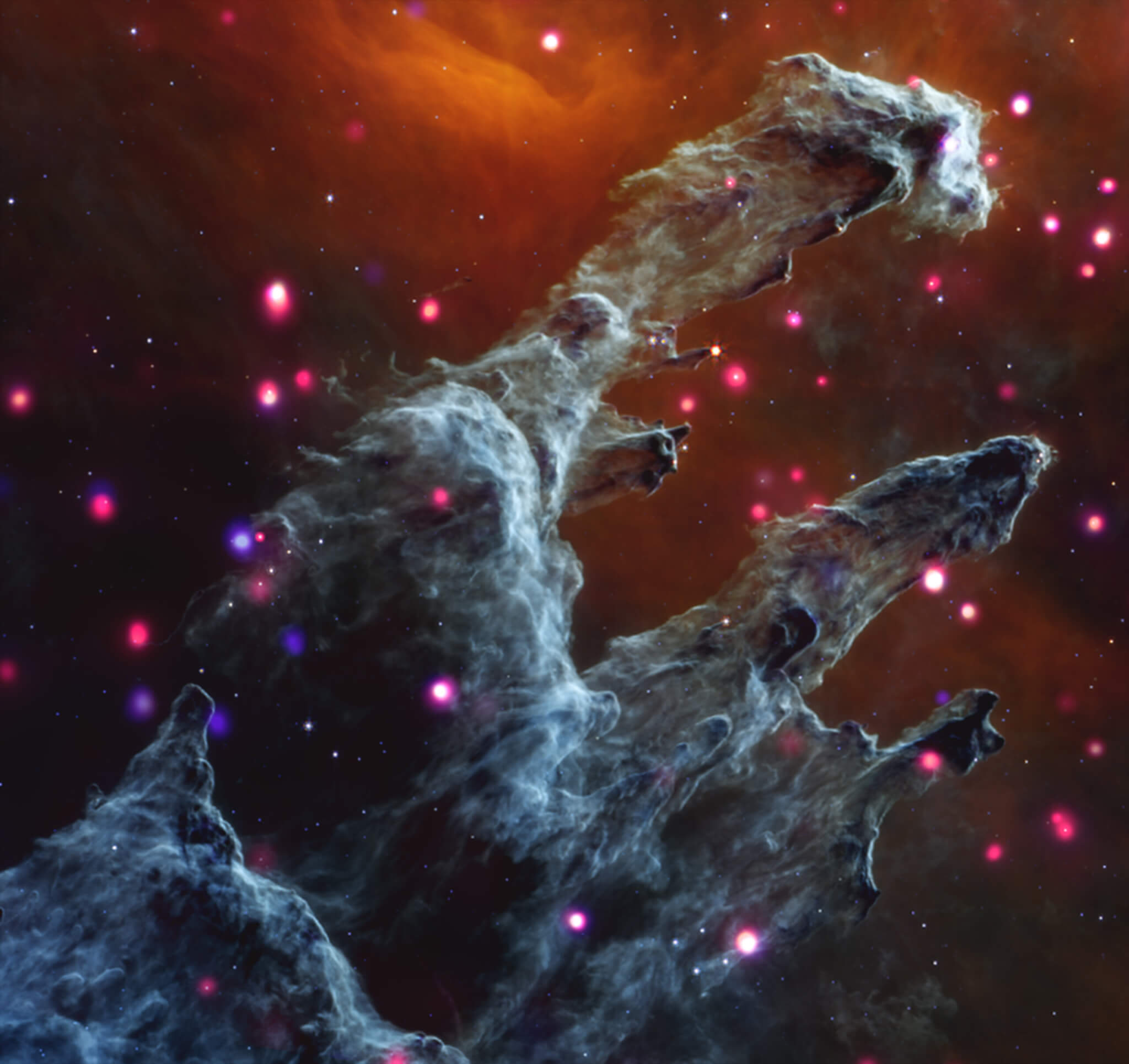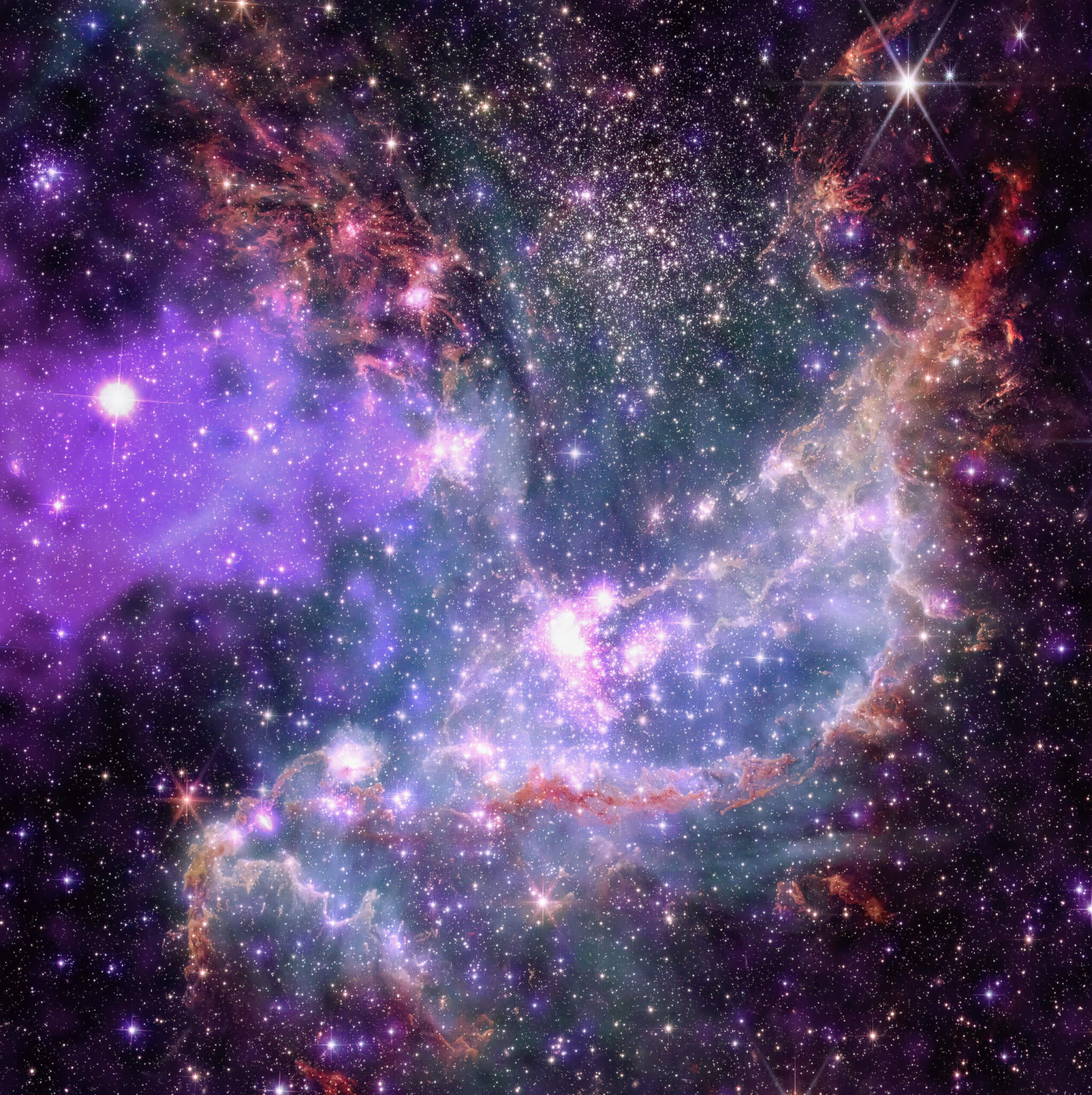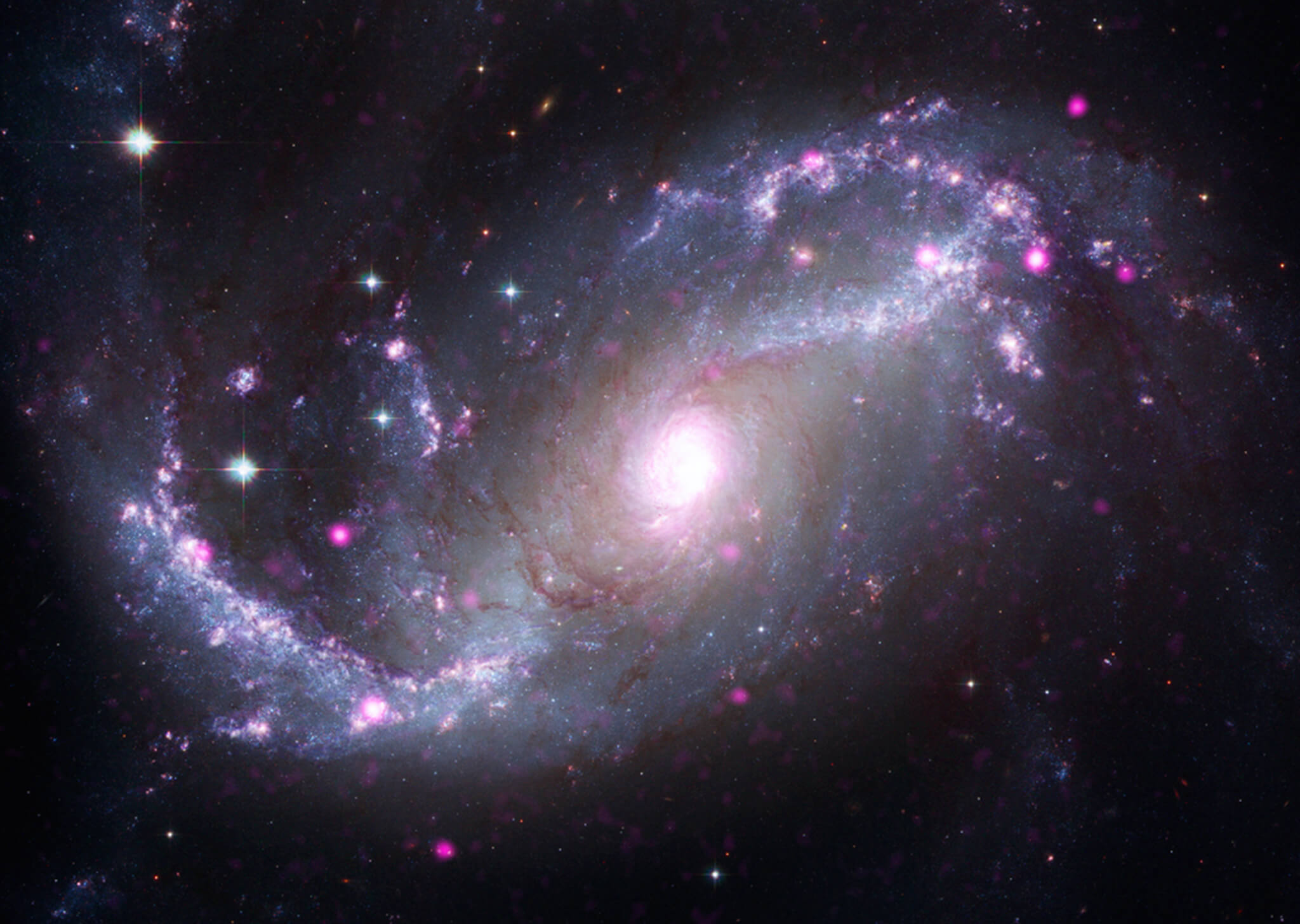CAMBRIDGE, Mass. — The James Webb Space Telescope just teamed up with another NASA space probe to collect a breathtaking set of images of the universe around us. Collating data captured by NASA’s Chandra X-ray Observatory and JWST, astronomers are giving us a fresh look at two galaxies, a nebula, and a star cluster — in spectacular fashion.
Four composite images released on May 23 combine Chandra’s X-rays — a form of high-energy light — with infrared data from previously released JWST images, both of which are invisible to the naked eye. The NASA team also used data from their Hubble Space Telescope (optical light) and retired Spitzer Space Telescope (infrared), plus the European Space Agency’s XMM-Newton (X-ray) and the European Southern Observatory’s New Technology Telescope (optical light).
“These cosmic wonders and details are made available by mapping the data to colors that humans can perceive,” NASA scientists explain in a media release.
Here’s what the space telescopes spotted:
M16 (Eagle Nebula)
This famous region of the sky is often called the “Pillars of Creation.” The JWST image shows dark columns of gas and dust shrouding the few remaining emerging stars that are still forming.

Star cluster NGC 346
This is a star cluster in a nearby galaxy, the Small Magellanic Cloud, about 200,000 light-years from Earth. JWST helped to reveal plumes and arcs of gas and dust that stars and planets use as source material during their formation. The purple cloud on the left, spotted by Chandra, is all that remains of a supernova explosion.

Galaxy NGC 1672
This is a spiral galaxy, but one that astronomers categorize as a “barred” spiral. “In regions close to their centers, the arms of barred spiral galaxies are mostly in a straight band of stars across the center that encloses the core, as opposed to other spirals that have arms that twist all the way to their core,” the NASA team says. Chandra data also found compact objects like neutron stars or black holes which are pulling in material from companion stars.

Galaxy M74 (Phantom Galaxy)
Messier 74 is also a spiral galaxy — like our Milky Way. It’s about 32 million light-years away from our planet. Astromoners call M74 the “Phantom Galaxy” because it is relatively dim, making it harder to spot with smaller telescopes.

South West News Service writer Dean Murray contributed to this report.

